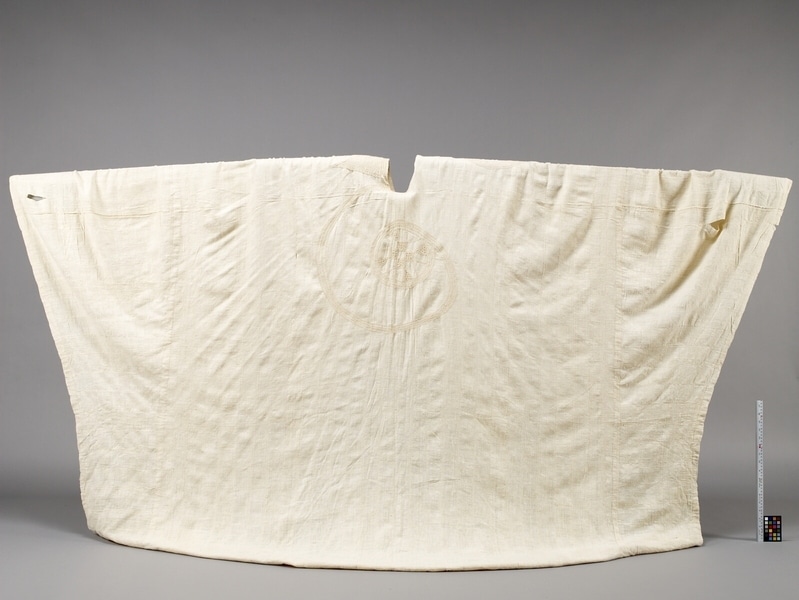Robe Item Number: K2.287 from the MOA: University of British Columbia


Description
Large cream robe with embroidery. The cotton is woven into strips which are then sewn together to make a wide robe. The neck and shoulder area is hand embroidered with local silk in a traditional Hausa pattern with hand spun cotton and locally produced silk. The pattern features circles and two downward pointing needles.
History Of Use
The baban riga (Hausa), agbádá (Yoruba), or boubou (French) is a large, loose-fitting, ankle-length robe worn by men of different groups in West Africa. The garment is said to have originated in the Middle East and introduced to West Africa by Arab and Berber merchants from the Maghreb and Tuareg through the trans-Saharan trade. Records show that this type of robe has been worn since the 11th century in ancient kingdoms across West Africa. The robe is usually worn at special events such as naming ceremonies and weddings. The attire was once considered a symbol of wealth and high-status due to its expensive fabrics and intricate embroidery.
Item History
- Made in Kano, Nigeria
- Owned by Michael Mason before May 18, 1972
- Received from Michael Mason (Donor) on May 18, 1972
What
- Name
- Robe
- Identification Number
- K2.287
- Type of Item
- robe
- Material
- cotton fibre and silk fibre
- Manufacturing Technique
- woven and sewn
- Overall
- height 148.0 cm, width 260.0 cm
Who
- Culture
- Hausa
- Previous Owner
- Michael Mason
- Received from
- Michael Mason (Donor)
Where
- Holding Institution
- MOA: University of British Columbia
- Made in
- Kano, Nigeria
When
- Ownership Date
- before May 18, 1972
- Acquisition Date
- on May 18, 1972
Other
- Item Classes
- textiles
- Condition
- good
- Accession Number
- 0198/0024